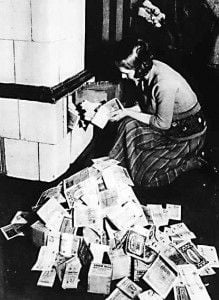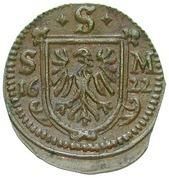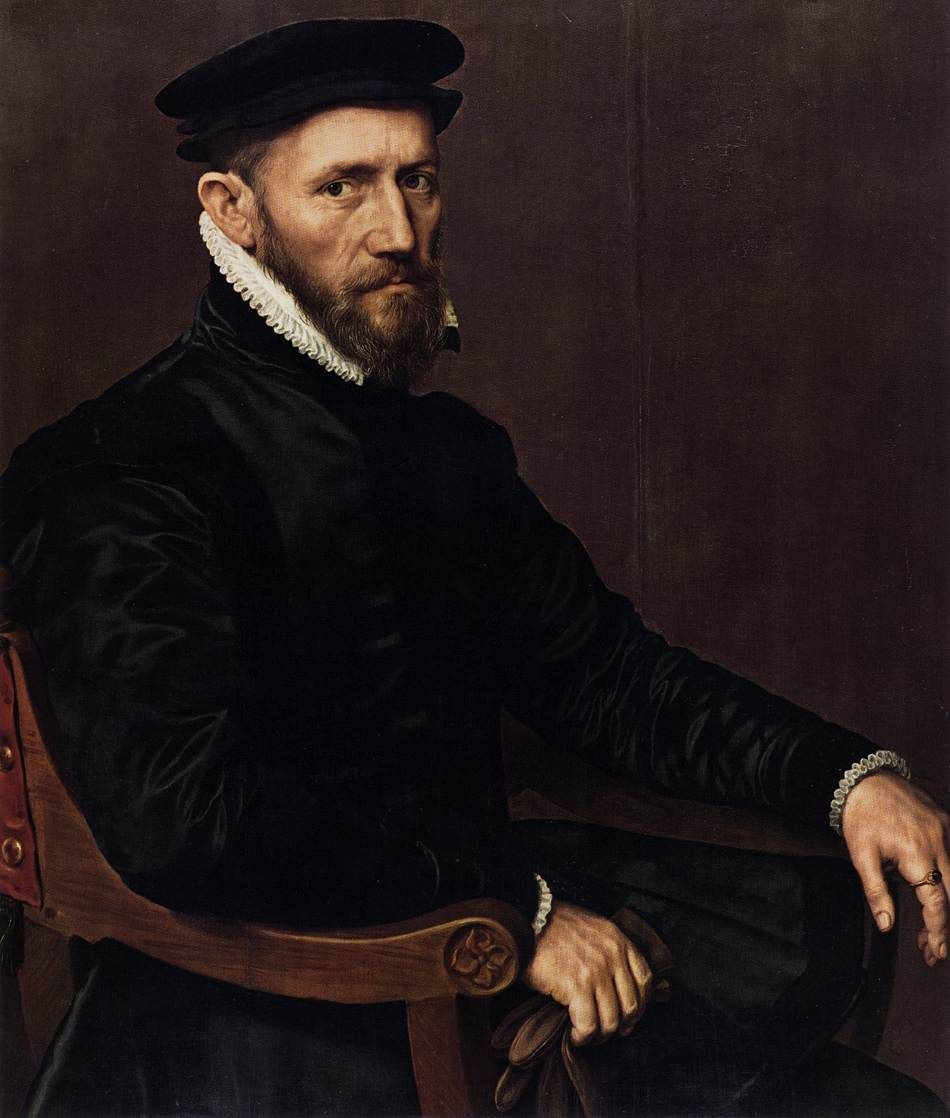“Kipper und Wipper”: Rogue Traders, Rogue Princes, Rogue Bishops and the German Financial Meltdown of 1621-23
It is tempting to think of the German hyperinflation of 1923 as a uniquely awful event, but it pales in comparison to what happened in the 17th century
/https://tf-cmsv2-smithsonianmag-media.s3.amazonaws.com/filer/20120329104036Kipper_und_Wipper.jpg)
The great German hyperinflation of 1923 is passing out of living memory now, but it has not been entirely forgotten. Indeed, you don’t have to go too far to hear it cited as a terrible example of what can happen when a government lets the economy spin out of control. At its peak in the autumn of that year, inflation in the Weimar Republic hit 325,000,000 percent, while the exchange rate plummeted from 9 marks to 4.2 billion marks to the dollar; when thieves robbed one worker who had used a wheelbarrow to cart off the billions of marks that were his week’s wages, they stole the wheelbarrow but left the useless wads of cash piled on the curb. A famous photo taken in this period shows a German housewife firing her boiler with an imposing pile of worthless notes.
Easy though it is to think of 1923 as a uniquely terrible episode, though, the truth is that it was not. It was not even the worst of the 20th century; during its Hungarian equivalent, in 1945-46, prices doubled every 15 hours, and at the peak of this crisis, the Hungarian government was forced to announce the latest inflation rate via radio each morning–so workers could negotiate a new pay scale with their bosses—and issue the largest-denomination bank note ever to be legal tender: the 100 quintillion (1020) pengo note. When the debased currency was finally withdrawn, the total value of all the cash then in circulation in the country was reckoned at 1/10th of a cent. Nor was 1923 even the first time that Germany had experienced an uncontrollable rise in prices. It had also happened long before, in the early years of the 17th century. And that hyperinflation (which is generally known by its evocative German name, the kipper- und wipperzeit) was a lot stranger than what happened in 1923. In fact, it remains arguably the most bizarre episode in all of economic history.

What made the kipper- und wipperzeit so incredible was that it was the product not only of slipshod economic management, but also of deliberate attempts by a large number of German states to systematically defraud their neighbors. This monetary terrorism had its roots in the economic problems of the late 16th century and lasted long enough to merge into the general crisis of the 1620s caused by the outbreak of the Thirty Years’ War, which killed roughly 20 percent of the population of Germany. While it lasted, the madness infected large swaths of German-speaking Europe, from the Swiss Alps to the Baltic coast, and it resulted in some surreal scenes: Bishops took over nunneries and turned them into makeshift mints, the better to pump out debased coinage; princes indulged in the tit-for-tat unleashing of hordes of crooked money-changers, who crossed into neighboring territories equipped with mobile bureaux de change, bags full of dodgy money, and a roving commission to seek out gullible peasants who would swap their good money for bad. By the time it stuttered to a halt, the kipper- und wipperzeit had undermined economies as far apart as Britain and Muscovy, and—just as in 1923—it was possible to tell how badly things were going from the sight of children playing in the streets with piles of worthless currency.
The economies of Europe had already been destabilized by a flood of precious metals from the New World (where in 1540 the Spaniards discovered an entire mountain of silver in Peru) and of copper from the Kopperburg in Sweden. This kick-started a sharp rise in inflation, as any substantial increase in the money supply will. In addition, there were limits to the control that most states had over their coinage. Foreign currency circulated freely in even the largest countries; the economic historian Charles Kindleberger estimates that in Milan, then a small but powerful independent duchy, as many as 50 different, mainly foreign, gold and silver coins were in use. And so a good deal had to be taken on trust; at a time when coins actually were worth something—they were supposed to contain amounts of precious metal equivalent to their stated value—there was always a risk in accepting coins of unknown provenance. The strange currency might turn out to have been clipped (that is, had its edges snipped to produce metal shavings that could then be melted down and turned into more coins); worse, it might have been debased. Contemporary mints, which were often privately owned and operated under license from the state authorities, had yet to invent the milled edge to prevent clipping, and hand-produced coins by stamping them out with dies. In short, the system might have been designed to encourage crooked practice.
This was particularly the case in Germany, which was then not a single state but an unruly hodgepodge of nearly 2,000 more or less independent fragments, ranging in size from quite large kingdoms down to micro-states that could be crossed on foot in an afternoon. Most huddled together under the tattered banner of the Holy Roman Empire, which had once been a great power in Europe, but was by 1600 in disarray. At a time when Berlin was still a provincial town of no real note, the empire was ruled from Vienna by the Hapsburgs, but it had little in the way of central government and its great princes did much as they pleased. A few years later, the whole ramshackle edifice would be famously dismissed, in Voltaire’s phrase, as neither holy, nor Roman, nor an empire.

The coins minted in the Empire reflected this barely suppressed chaos. In theory the currency was controlled and harmonized by the terms of the Imperial Mint Ordinance issued at Augsburg in 1559, which specified, on pain of death, that coins could be issued only by a select group of imperial princes via a limited number of mints that were subject to periodic inspections by officials known as Kreiswardeine. In practice, however, the Ordinance was never rigorously enforced, and because it was cost more to mint low-denomination coins than larger ones, the imperial mints soon stopped producing many smaller coins.
Unsurprisingly, this practice soon created strong demand for the coins used in everyday transactions. Consequently, the empire began attracting, and circulating, foreign coins of unknown quality in large quantities, and unauthorized mints known as Heckenmünzen began to spring up like mushrooms after summer rains. As the number of mints in operation rose, demand for silver and copper soared. Coiners soon began to yield to the temptation to debase their coinage, reducing the content of precious metal to the point where the coins were worth substantially less than their face value. Inevitably, inflation began to rise.

Economists have long studied the problems “‘bad” money can cause an economy. The effects were first described by Sir Thomas Gresham (1518-79), an English merchant of Queen Elizabeth’s reign. Gresham is remembered for stating what has become known as “Gresham’s Law”—that the bad money in an economy drives out the good. Put more formally, the law implies that an overvalued currency (such as one in which the stated content of precious metal is much less than expected) will result either in the hoarding of good money (because spending it runs the risk of receiving bad money in change) or in the melting down and recoining of good money to make a larger amount of debased coinage.
What happened in Germany after bad money started to circulate there in about 1600 might have been designed as a case study in Gresham’s Law. Coins were increasingly stripped of their gold, silver and copper content; as a result, the imperial currency, the kreuzer, lost about 20 percent of its value between 1582 and 1609. After that, things began to go seriously wrong.
One reason for the lurch into crisis was the need felt by Germany’s thousands of rival rulers to hoard the cash they’d need to pay for the Thirty Years’ War, which broke out in 1618. But another was a desire for revenge against rogue states that were churning out debased coinage and allowing it to leak into their neighbors’ healthier economies. Notes Kindleberger:
Debasement was at first limited to one’s own territory. It was then found that one could do better by taking bad coins across the border of neighboring principalities and exchanging them for good with the ignorant common people, bringing back the good coins and debasing them again. The territorial unit on which the original injury had been inflicted would debase its own coin in defense, and turn to other neighbors to make good its losses and build its war chest. More and more mints were established, debasement accelerated in hyper-fashion.
Here it may be instructive to ask what the phrase kipper- und wipperzeit actually means. It’s period slang whose broad meaning is not disputed—it may be best translated, not very literally, as “the time of giving short measure in weighing”—but whether you believe that kippen and kipper translate as “clipping” or “to tilt,” and wippen and wipper as “seesaw” or “to wag” (as different authors suggest) is a matter of personal preference. The phrase certainly hints at the assay scales that moneychangers used to calculate exchange rates, and an element of cheating is definitely implied; the “wagging” mentioned above is probably a reference, Fritz Redlich says, to the way “money exchangers kept their scales moving to befuddle the innocent onlookers whose good money was being exchanged for bad.” In short, the changers were crooks, and the kipper- und wipperzeit was a period of financial anarchy in which rival states competed to undermine one another’s economies.
Great cunning was used; bad coins were smuggled past customs posts and city gates hidden in bags of produce and brought out on market day; they were coated with good metal to disguise them; crooked mints made a point of keeping a small supply of good coins on hand in case of a visit from the kreiswardeine. Quick-thinking con men “went abroad,” Kindleberger says, “setting up exchange booths, exploiting as best they could pastors, millers and peasants.” Mints sent out a second group of criminals to buy what remained of the good coins to keep their coiners supplied with precious metals. These transactions were, of course, settled with debased coins.
Some cities were alert enough to profit; Leipzig paid higher prices for silver than any other imperial town, and so silver poured into it. Brunswick, which had 17 mints in 1620, boasted 40 three years later, and it was there that the first convent was requisitioned and converted into a mint, employing 400 workers. At the height of the crisis, business-minded princes, nobles and merchants could rent mints by the week to turn out their own kippergeld.
Inevitably, these enterprises had limited prospects. Once they got a reputation for poor coins, they were doomed—but then so were their more honest competitors, for these soon found, Kindleberger notes, that “the higher price of silver and rising wages made it unprofitable to produce standard subsidiary coins. Thus honorable mints stopped producing subsidiary coins altogether.” That opened fresh opportunities for other crooks to open unauthorized mints to churn out small-denomination coins of even more doubtful provenance. So weak were the imperial efforts to clamp down on this that even official mints started to churn out kippergeld.
In consequence, the panic soon began to draw in all classes. By the first months of 1622, when the process had already become manic, everyone was at it. A contemporary pamphlet, quoted by Richard Gaettens, observed that:
As soon as one receives a penny or a groschen that is a bit better than another, he becomes a profiteer.… It follows that doctors leave the sick, and think more of their profits than of Hippocrates and Galenus, judges forget the law, hang their practices on the wall and let him who will read Bartholus and Baldus. The same is true of other learned folk, studying arithmetic more than rhetoric and philosophy; merchants, retailers and other trades—people push their businesses with short goods.

Perhaps not surprisingly, the wealthy were the most heavily implicated. Among those who made fortunes from the kipper- und wipperzeit were the Duke of Alva—supreme commander of Spanish forces in the Low Countries—and the Polish Duke Januz of Ostrog, who on his death left a fortune consisting of 600,000 ducats, 290,000 mixed coins, 400,000 crowns and 30 barrels of broken silver. Perhaps the greatest of the profiteers was Albrecht Von Wallenstein, who during the Thirty Years’ War became not only a great prince, but also generalissimo of all the imperial forces in Europe in large part as a result of the fortune he made during the inflationary period. Wallenstein achieved this by investing the fortune he inherited from his dead wife in a mint lease covering Bohemia, Moravia and Lower Austria, profiting hugely from churning out debased coinage and then using those profits to snap up the estates of dispossessed Protestant noblemen after the Defenestration of Prague sparked war in 1618—transactions that were, naturally, completed in dodgy kippergeld. The prince was one of the few nobles able to finance his own private mercenary army at a time when other princes had trouble merely feeding their troops.
Little has been written as to how exactly the kipper- und wipperzeit got its start, and its origins remain something of a mystery. Kindleberger speculates, based on old German histories, that “the first invasion of debased money came from Italy and Switzerland as early as 1580,” and that the unholy Bishop of Chur was the most important of these early villains, exporting his dubious coins north via Lindau, on Lake Constance; but the historian concedes that this did not in itself set inflation inexorably in motion and adds that coining to the north was “particularly insolent.”
The consequence went beyond mere economic difficulty; the premises of exchangers suspected of dealing in kippergeld were stormed by angry mobs in Brandenburg, while a February 1622 riot in doomed Magdeburg left 16 dead and 200 wounded. By then, the imperial economy was wrecked. Isabel Schnabel and Hyun Song Shin write that “trade and business stagnated almost completely. Craftsmen and farmers were no longer willing to sell their services and products for worthless money. Tax revenues also ran dry, as taxes were paid in copper money.”
It’s hard at this distance to judge exactly how badly the kipper- und wipperzeit hit the German economy, but the effects were plainly considerable. Some territories were worse hit than others—Saxony and Frankfurt perhaps worst, and the Hanseatic towns of northern Germany the least. How things went depended largely on the financial prudence of a district’s rulers, and it is no real surprise to find that the cautious merchants of the League and the Dutch Republic were not attracted to the profits of debasing. Overall, though, the inadequate data that survives suggests that the prices of basic foodstuffs rose roughly eightfold in most of Germany between 1620 and 1623, afflicting not only the poor but those on salaries, particularly city workers who had no land on which to cultivate food of their own. It’s also possible to calculate that, by 1621, the average low-denomination coin circulating in the empire was worth only about a fifth of its face value. Kindleberger contends that the process ran on until, by 1623, there was so much rotten currency in circulation that it became all but impossible to get anyone to accept more kippergeld. It was only at that point that the great magnates of the empire decided it would be in their best interests to revert to the terms of the Mint Ordinance of 1559 and fix an exchange rate for the Reichstaler. This new exchange rate remained in force for about 40 years, but, even so, it proved impossible to staunch inflation for many years in the midst of war.
Kindleberger concludes his study with a quotation from Macaulay’s History of England that may be allowed to stand for the Kipper- und Wipperzeit—and indeed for all hyperinflations. Writing of a similar English wave of coin-clipping that occurred in 1696, the great historian observed:
It may well be doubted whether all the misery which has been inflicted on the English nation in a quarter of a century by bad Kings, bad Ministers, bad Parliaments and bad Judges, was equal to the misery caused in a single year by bad crowns and bad shillings.
Sources:
WE Bomberger and GA Makinen. ‘The Hungarian hyperinflation and stabilization of 1946-46.’ Journal of Political Economy 91 (1983); William Coupe. The German Illustrated Broadsheet in the Seventeenth Century: Historical and Iconographical Studies. Baden-Baden: Heitz, 1966; Markus Denzel. ‘State and finance in the Holy Roman Empire from c.1650 to c.1800: a survey.’ Unpublished paper, International Economic History Congress, Helsinki, 2006; Richard Gaettens. Geschichte der Inflationen. Vom Altertum bis zur Gegenwart. Munich: Battenburg, 1982; Tony Judt. Postwar: A History of Europe Since 1945. London: Pimlico, 2007; Charles P. Kindleberger. ‘The economic crisis of 1619 to 1623.’ In Journal of Economic History 51:1 (1991); Fritz Redlich. Die deutsche Inflation des frühen 17. Jahrhunderts in der Zeitgenössischen Literatur: Die Kipper und Wipper. Cologne: Böhlau, 1972; Isabel Schnabel and Hyun Song Shin. ‘The “Kipper- und Wipperzeit” and the foundation of public deposit banks‘, November 2006.
/https://tf-cmsv2-smithsonianmag-media.s3.amazonaws.com/accounts/headshot/mike-dash-240.jpg)
/https://tf-cmsv2-smithsonianmag-media.s3.amazonaws.com/accounts/headshot/mike-dash-240.jpg)